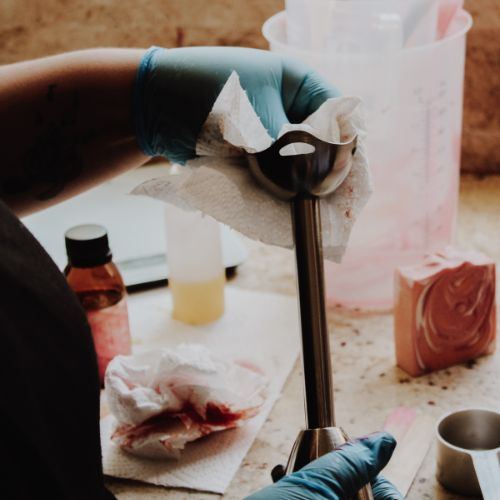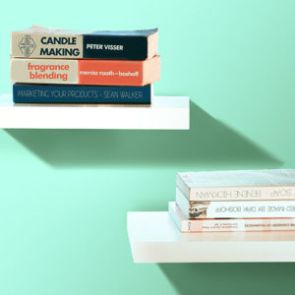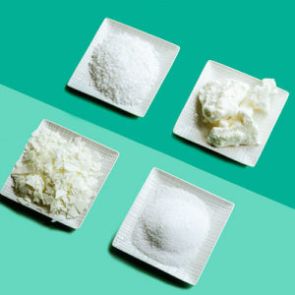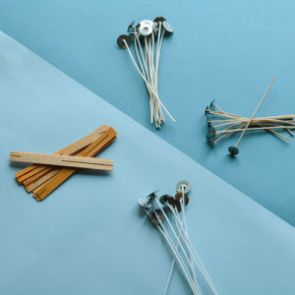Cleaning Up After Soapmaking
Soapmaking is one of our favorite things to do. It’s so much fun and a great way to let your creativity run wild. On the other hand, however the more creative you are, the more dishes pile up.
In this article we are going to share with you how to clean your equipment and dishes safely and effectively.
When you are doing your cleanup, you should still be wearing your protective gear just incase you come into direct contact with some unsaponified soap – which is unavoidable. As you know, we mix oils with lye (sodium hydroxide), to get soap. However, the lye and oils don’t immediately turn into soap. The saponification process can take up to 24hours to complete, meaning the soap batter still stuck to your equipment and dishes are still caustic – less so than a pure lye solution, but can still burn your skin none the less.

Firstly, scrape out all containers as clean as possible when making soap – this will make the cleanup easier and is less wasteful. Then, wipe down all equipment and jugs with paper towels to the point where they look completely clean. If you were to wash the dishes in warm water and soap without wiping it down first, you would end up with an oily, caustic mess in your sink that is sure to just clog the drain. The stick blender also gets a good wipe and then you can blitz it in some warm soapy water.
Once everything is thoroughly wiped down, you can then wash your dishes in the sink with soap and warm water, like you would any other dishes. You can also use the dishwasher instead of handwashing. DO NOT put unwiped soap dishes in the dishwasher as this will clog the pipes and remain very oily.
Another alternative – which some find too tedious, is to wait until the soap has completely saponified (a day or 2) so that it is no longer caustic, and then wash it. But by this time the soap has become very hard and is quite tricky to clean. You can leave it to soak in warm water before washing it to assist with the hardness. You should be very cautious if you do this, dirty dishes must be stored away safely away from children and pets or anyone that does not know how to safely handle lye.
When preparing your lye solutions, you should aways immediately rinse everything that came into contact with the lye and then wash it later on with the rest of your soap dishes.
You can clean your countertops with vinegar as vinegar neutralizes lye, but any cleaning product will work just as well. Please also make sure you read our handling lye safety document before attempting any soap recipe.




